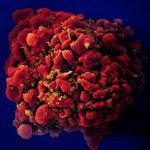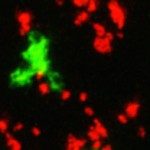Lien vers Pubmed [PMID] – 31572366
Front Immunol 2019;10:2140
Quorum sensing is a type of cellular communication that was first described in bacteria, consisting of gene expression regulation in response to changes in cell-population density. Bacteria synthesize and secrete diffusive molecules called autoinducers, which concentration varies accordingly with cell density and can be detected by the producing cells themselves. Once autoinducer concentration reaches a critical threshold, all bacteria within the autoinducer-rich environment react by modifying their genetic expression and adopt a coordinated behavior (e.g., biofilm formation, virulence factor expression, or swarming motility). Recent advances highlight the possibility that such type of communication is not restricted to bacteria, but can exist among other cell types, including immune cells and more specifically monocyte-derived cells (1). For such cells, quorum sensing mechanisms may not only regulate their population size and synchronize their behavior at homeostasis but also alter their activity and function in unexpected ways during immune reactions. Although the nature of immune autoinducers and cellular mechanisms remains to be fully characterized, quorum sensing mechanisms in the immune system challenge our traditional conception of immune cell interactions and likely represent an important mode of communication at homeostasis or during an immune response. In this mini-review, we briefly present the prototypic features of quorum sensing in bacteria and discuss the existing evidence for quorum sensing within the immune system. Mainly, we review quorum sensing mechanisms among monocyte-derived cells, such as the regulation of inflammation by the density of monocyte-derived cells that produce nitric oxide and discuss the relevance of such models in the context of immune-related pathologies.


